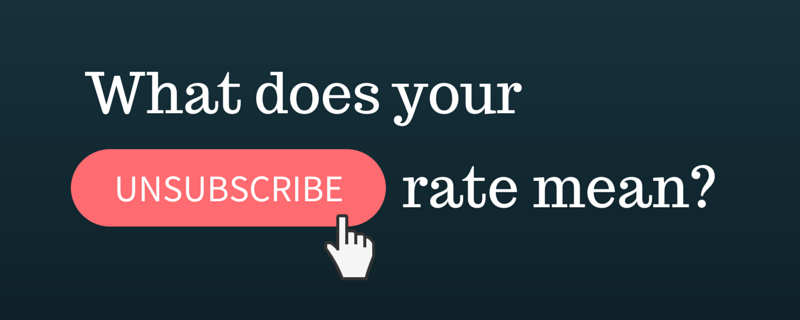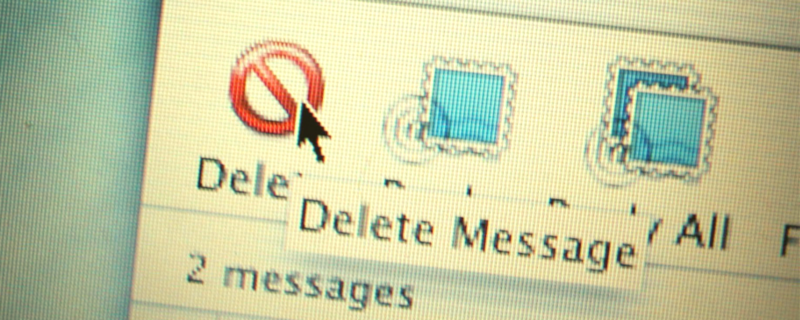BLOG
The True Value of your Unsubscribe Rate

No one wants to see customers unsubscribe, but in some ways, it can be a positive thing. You do not want to waste your time with customers who are genuinely no longer interested when you can better focus on those who are interested and interacting with you. You can also try to work out what you are doing wrong. Are you sending emails too frequently? Is the information in your posts actually helpful, or are you giving customers something they do not need?
To know the true value of your unsubscribe rate, you must first understand it. Only then can you create sharper, more targeted emails. In this article, we’ll explore both.
How to view your unsubscribe rate
If you are not already using marketing automation software in order to send out your emails, consider signing up for one. Marketing automation not only allows you to create emails and send them out to segmented parts of your subscriber list, but also, they allow you to track the progress of your emails, which is vital for understanding your unsubscribe rate.
There are a few different ways to look at your unsubscribe rate. You can look at individual emails and see how many people unsubscribed from it or you can look at a week or month’s worth of emails and see how your rate progressed. The goal is to try and get inside your customer’s mind and determine what made them want to leave.
When looking at an individual email with a high unsubscribe rate, look at the unsubscribe rate of the emails before it and the emails after it. Are they also fairly high? If so, the content of your emails could be boring or not important to your readers. If only this one email has a high unsubscribe rate, it might be that the content of the email was not what readers wanted.
Look at the email addresses that unsubscribed and see if you can find any patterns or similarities. Did any of these users have accounts with you? How active were those accounts? When was the last time these customers purchased from you or made contact? If these were inactive consumers, then they might have unsubscribed because they no longer needed your services. Do not worry about these unsubscribers. They were wasting your marketing efforts anyway.
If you look at your unsubscribe rate from a month-to-month basis, compare how your unsubscribe rate has increased or decreased then look back at the content of your emails. What changed? Did you try something new one month and something different the next month?

Creative solutions for lower unsubscribe rates
Now that you have a good idea as to why customers might be unsubscribing, it is time to try a few possible solutions. Remember, this is a trial-and-error stage so feel free to experiment to see what people respond well to and what bores them.
Potential problem: Subject line is boring
Your subject line is your one chance to grab the reader’s attention so it should state upfront what your email is about. If you have a new blog post, tell your readers so. If you want to encourage people to follow you on Instagram, say so.
Potential problem: Emails are too generic
Sending out an email for the sake of sending out an email never helped anyone. You should always have a clear, definite reason for sending out your emails, and you should be offering your customers something, whether it is a link to a new blog post or an update on a new product or service you are launching.
Here is a good way to decide whether or not your email is worth sending: can you accurately sum it all up in a catchy subject line? If not, tweak your content.
Potential problem: Emails are not exclusive
One of the biggest benefits of being on an emailing list is that you should get updates first. Your subscribers should be the first to know when you have a sale going on or have exclusive access to some content, such as eBooks.
Give subscribers an added benefit of being on your emailing list with exclusive content. Even if they do not open all of your emails, they will stay subscribed just to get access to your great, members-only content.

Technical solutions for lower unsubscribe rates
Sometimes it is not your content that is driving away customers, but the way you send out emails.
Potential problem: Emails are too frequent
Your consumers may be leaving because they are tired of receiving 10 emails from you every day. Even if you are not sending 10 emails a day, consumers could also be interacting with your site, which might send them trigger emails, depending on what they are doing. You might also be sending out real-time emails while your marketing automation software is sending out its own emails.
Create a schedule for your automated emails and real-time emails. Try not to send two emails out in one day, and if you do not have anything new to say or offer, do not send out an email at all.
Potential problem: Email comes at inopportune time
Let’s say you are a property developer that works mostly with businesses and commercial spaces. You send out your emails early in the morning, but your open rate is low. Why? Your emails are the first thing they see in the morning. Why wouldn’t they read your email first?
What you might not know is that these business owners do not have time to look at their emails until late afternoon when they are ready to close up shop for the day. By then, your email has gotten buried under all the other emails that have come in, and the business owners may be more focused on those than yours.
If you are unsure when your customer base is mostly likely to check their emails, try sending out emails and different times of the day. Track your open rates to see which times got the most attention.
Remember, you cannot save every unsubscriber and make them sign up once more for your emails. It is not worth focusing your efforts on lost causes. What you should be focusing on is creating a better experience for the customers that are currently interested. They are the ones who will benefit the most from your changes so no matter how you change your email marketing strategy, try to keep their needs in mind.











